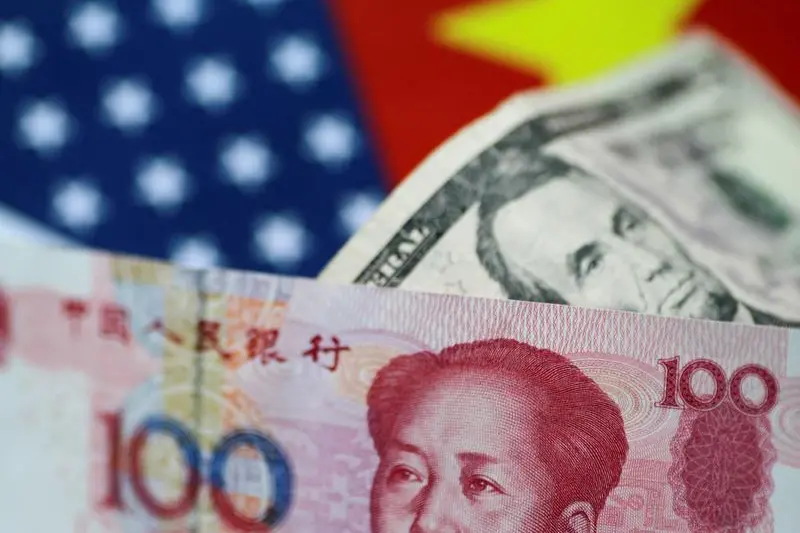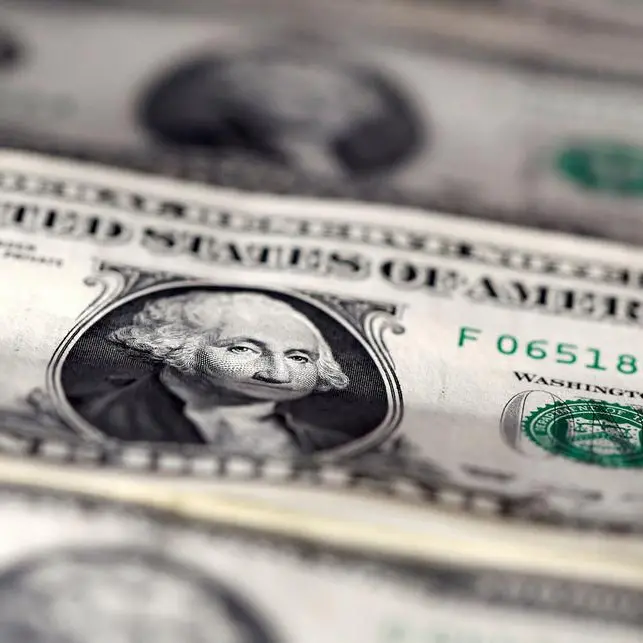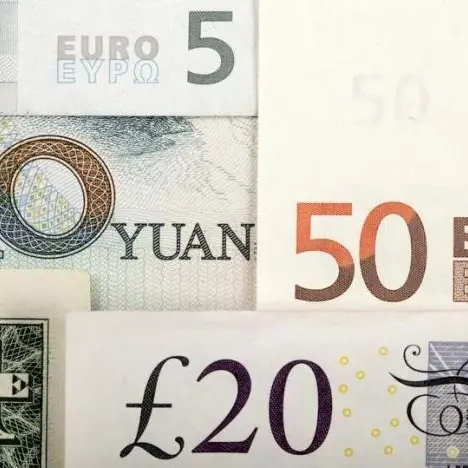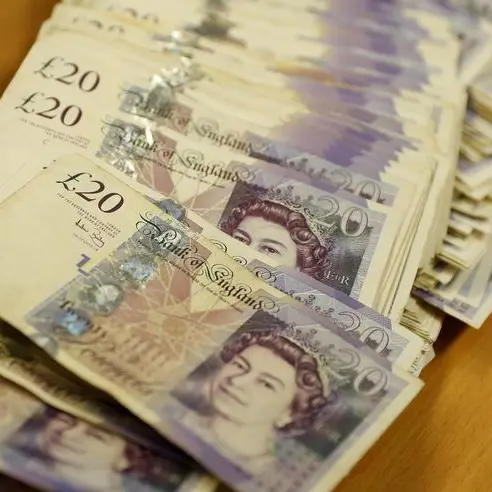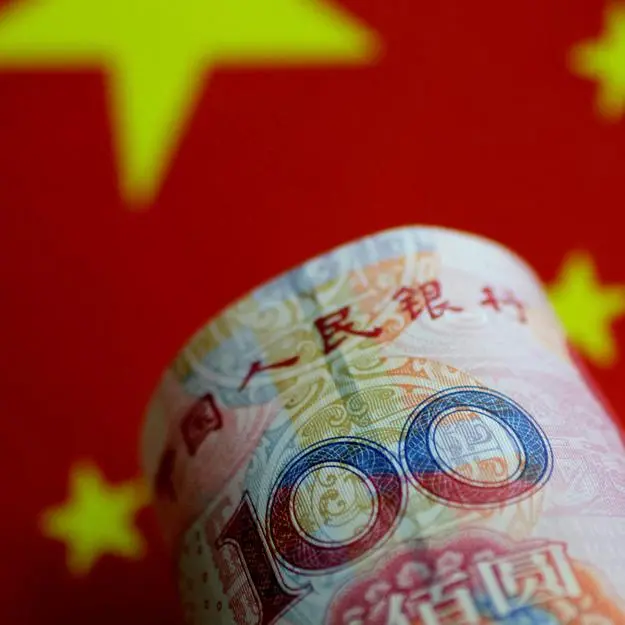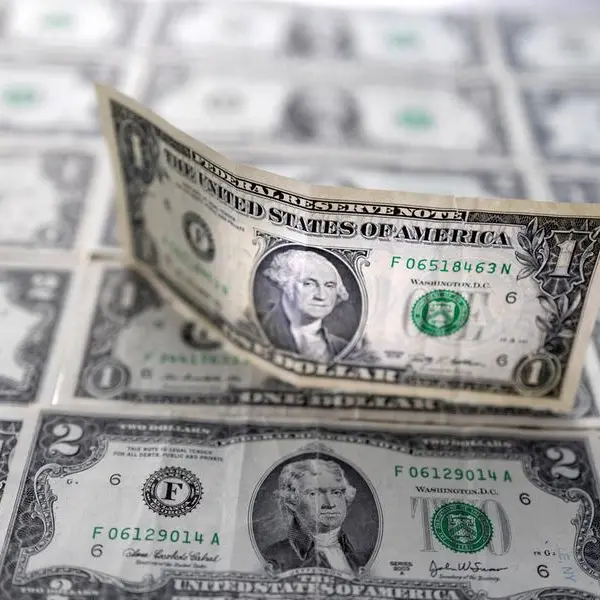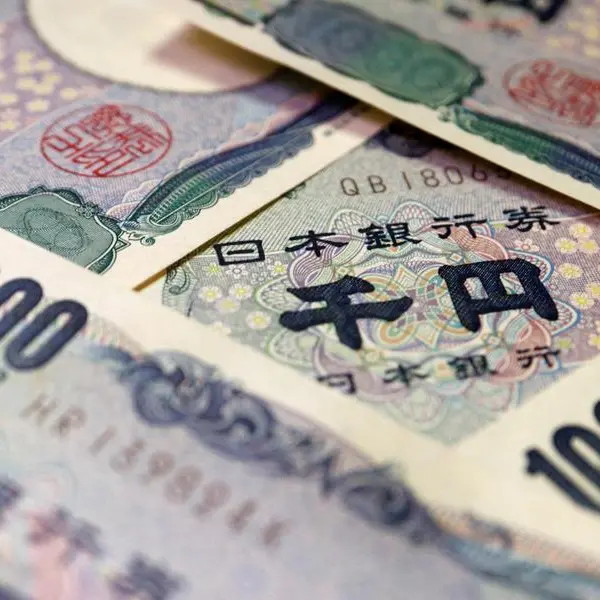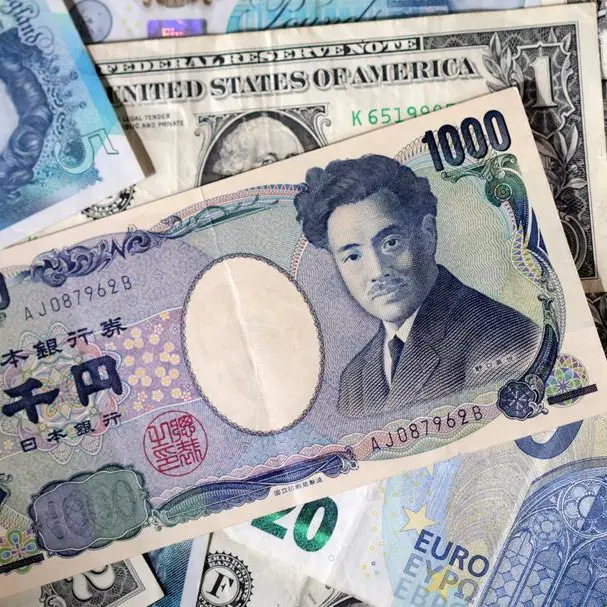PHOTO
The dollar and China's yuan were steady on Wednesday as teams from U.S. and China concluded trade talks in London, hinting at a thaw in a damaging trade war between the world's two largest economies but offering scant detail.
The countries' officials agreed on a framework based on a trade truce reached last month in Geneva that would resolve China's export restrictions on rare earth minerals and magnets, and remove some U.S. export restrictions that were recently put in place.
China's Vice Commerce Minister Li Chenggang said that the next step would be to take the agreed framework back to their respective heads of state.
Tony Sycamore, a market analyst with IG, said it would be "fantastic" if the sides kept to the terms of their trade deal in Geneva, which effectively reduced U.S. tariffs on Chinese goods to 30% and Chinese tariffs on U.S. goods to 10%, down from levels above 100%.
"Now that for me was probably the market consensus ... and now people are just trying to work out whether they're going to buy or sell the U.S. dollar and that's I think reflecting a bit of that indecision," he said.
The dollar firmed slightly in the wake of the news, pushing the euro down 0.07% to $1.141 and steadying at 144.91 yen.
China's onshore yuan was little changed at 7.1873 per dollar, while the offshore unit stood at 7.1875.
An index that measures the greenback against six other currencies inched up 0.1% and last stood at 99.132.
However, analysts noted that any newly agreed tariffs would still be higher than they were late last year and would thus be a drag on the global economy.
Also keeping investors cautious, a federal appeals court allowed President Donald Trump's most sweeping tariffs to remain in effect, while it reviews a lower-court decision blocking them on grounds that he had exceeded his authority by imposing them.
Much of the year has been dominated by investors' unease over Trump's erratic policies. Despite a bounce back in U.S. stocks, the erosion of investor confidence is clearly reflected in the dollar, which is down more than 8% so far this year.
FOCUS ON UK's SPENDING PLANS
In Britain, markets were keen on how British finance minister Rachel Reeves will divide up more than 2 trillion pounds ($2.7 trillion) of public spending for government departments from 2026 to 2029 and investment plans out to 2030.
Sterling dipped 0.1% at $1.3483, while gilt yields were marginally higher.
Later in the day, investors will closely parse a U.S. consumer inflation report that could potentially determine the trajectory of the Federal Reserve's monetary policy for the rest of the year.
The Fed is expected to hold rates steady next week and a Reuters poll showed that analysts expect the central bank to hold that stance till September.
Analysts at ANZ Bank said that consumers are likely to face the impact of tariffs through higher goods prices, which would also keep the Fed cautious as they look for more clarity on how U.S. trade policy is impacting inflation over the coming months.
Attention will also be on a $39 billion, 10-year Treasury bond auction that could be a reflection of investor appetite for U.S. debt as concerns mount regarding an expensive tax and spending bill that is making its rounds in Congress.
The yield on 10-year Treasuries was little changed at 4.467%.
Elsewhere, risk-associated currencies including Australia's dollar declined 0.25% to $0.6505, while New Zealand's dollar dropped 0.33% to $0.6033. (Reporting by Johann M Cherian in Bengaluru Editing by Shri Navaratnam and Kim Coghill)
